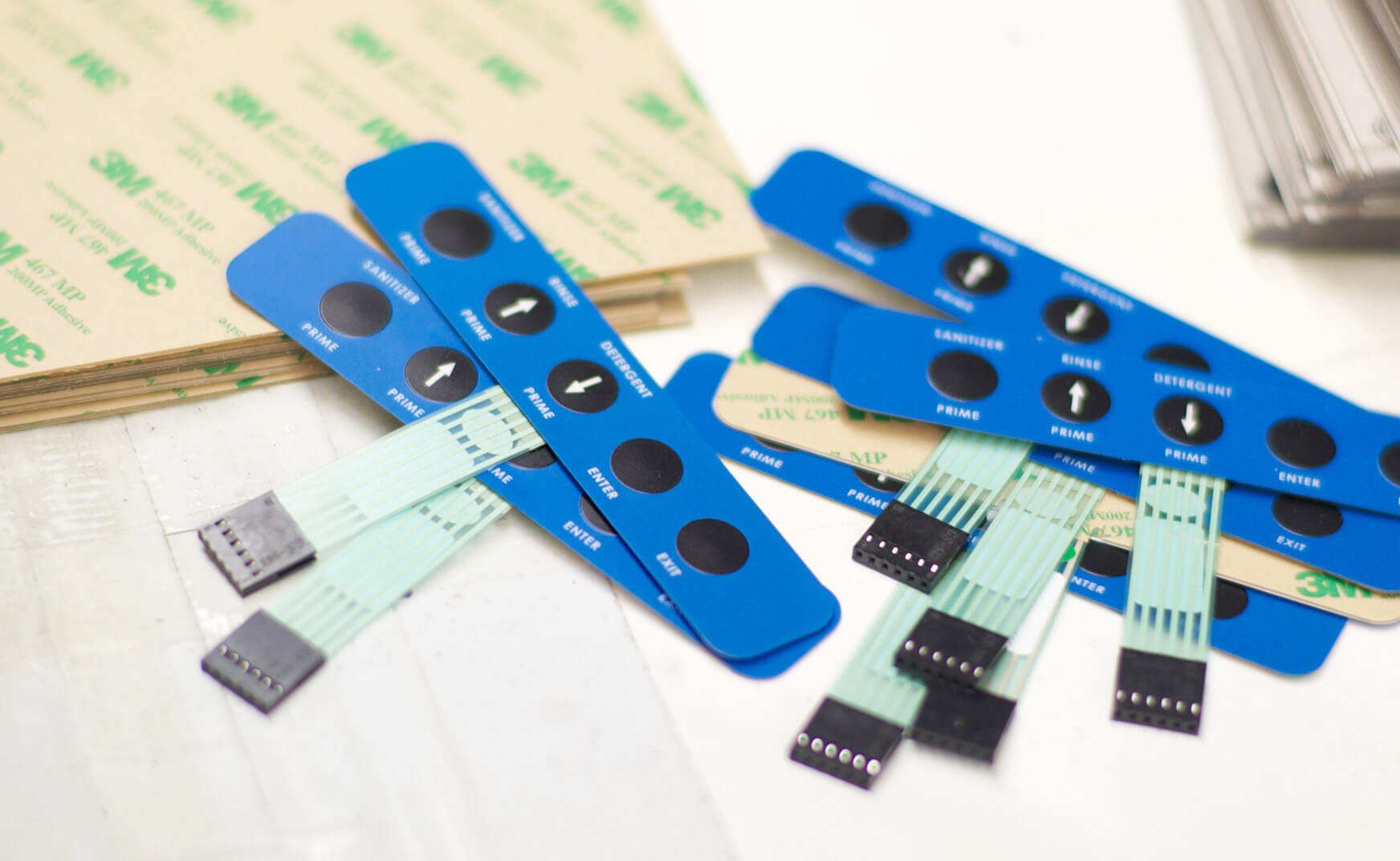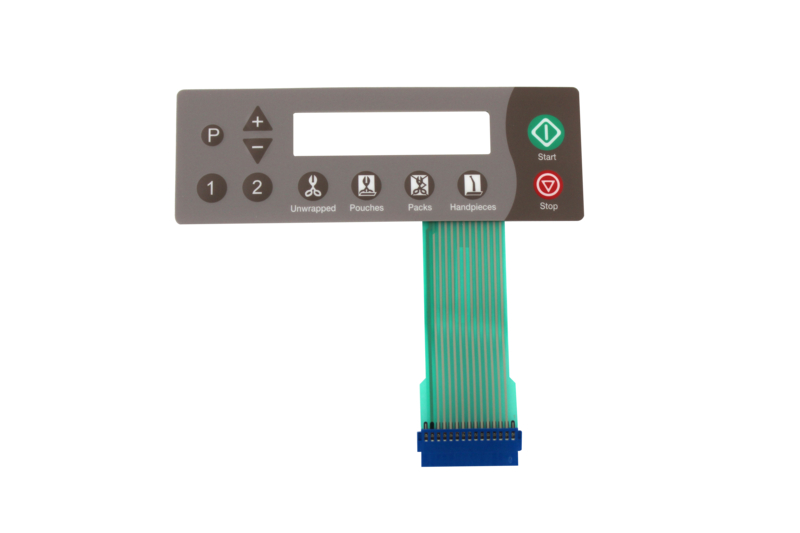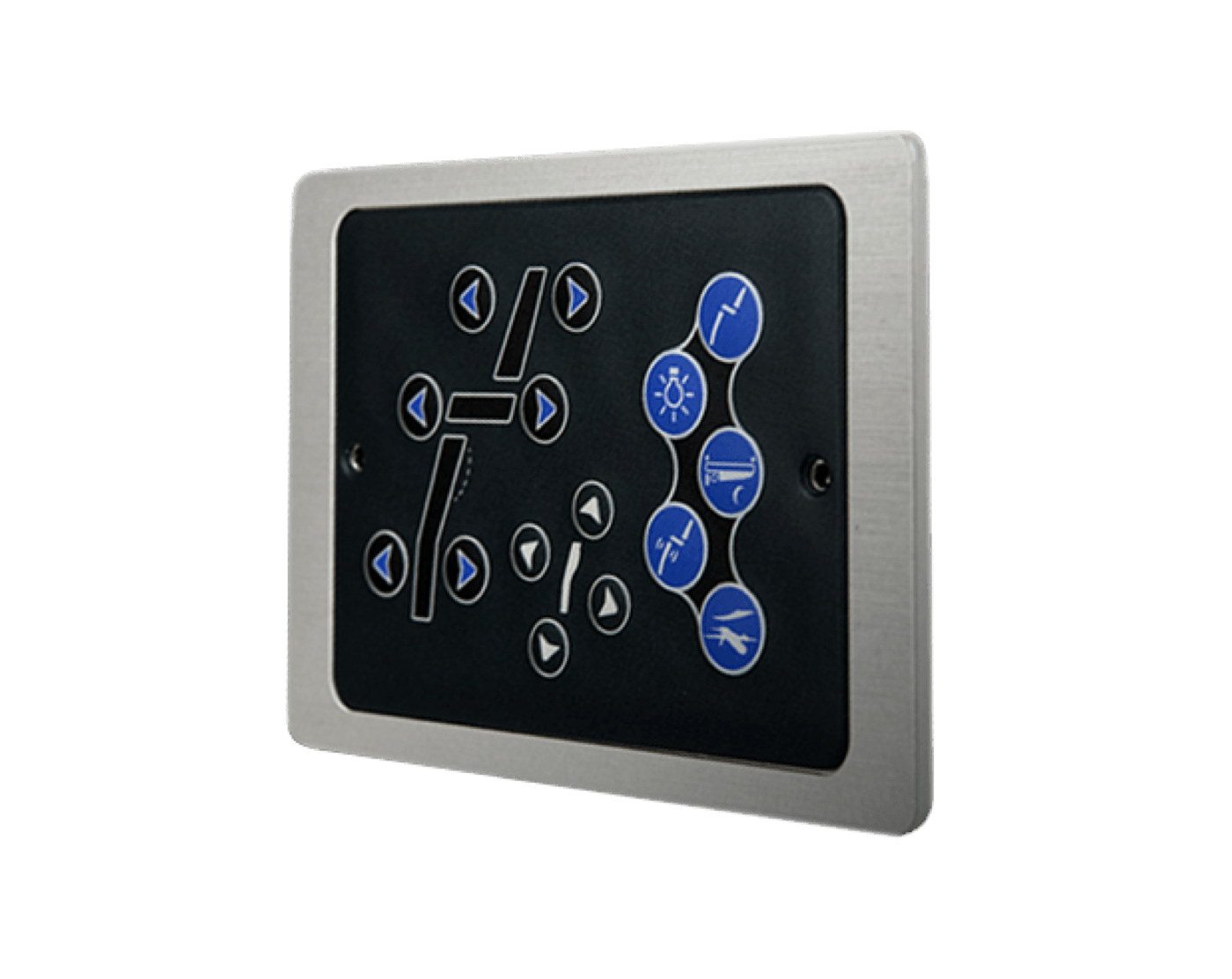Many businesses depend on a reputable membrane switch manufacturer for durable solutions.
Many businesses depend on a reputable membrane switch manufacturer for durable solutions.
Blog Article
Everything About Membrane Layer Change: Comprehending Its Design and Functionality
When you think of the control interfaces in contemporary gadgets, membrane buttons usually come to mind. These elements are more than just buttons; they blend layout and performance flawlessly. Understanding just how they function and what makes them reliable can alter your viewpoint on day-to-day electronic devices. But, there are nuances to their design and efficiency that you may not understand. Let's discover what sets membrane switches over aside from other control systems.
What Are Membrane Buttons?

Membrane switches can also be personalized relating to shape, size, and graphics, permitting manufacturers to create special interfaces tailored to particular products. In general, membrane layer switches play a substantial role in improving user experience across a wide selection of applications.
Just How Membrane Layer Switches Over Work
When you push a trick on a membrane switch, it turns on a straightforward yet reliable mechanism. The leading layer, typically made of flexible material, lowers onto a conductive layer beneath it. This activity bridges the space in between conductive traces, completing an electric circuit. As quickly as the circuit closes, it sends a signal to the gadget's controller, which interprets your input.
You'll see that the tactile responses varies based on the button layout, using either a soft click or a more noticable response. Once you release the secret, the membrane layer go back to its initial position, reopening the circuit and quiting the signal. This procedure takes place nearly instantaneously, guaranteeing a receptive user experience.
Membrane switches are preferred as a result of their sturdiness and resistance to dust and moisture, making them suitable for numerous applications, from household home appliances to medical devices. Recognizing this procedure assists you value their extensive usage.
Key Components of Membrane Layer Switches
Recognizing the key parts of membrane switches is essential for realizing their performance and style. At the core, you'll discover the visuals overlay, which offers the aesthetic user interface for users. Beneath that, there's a spacer layer that separates the circuit layers, guaranteeing that they do not make get in touch with up until pressed. The circuit layer is where the magic takes place; it is composed of conductive traces that finish the circuit when you push the switch. An additional important component is the adhesive backing, enabling the switch to stick to surfaces securely. Ultimately, the safety layer shields against ecological factors and wear, extending the button's lifespan. Each element plays a considerable duty in making certain trusted performance and customer interaction. By understanding these parts, you'll acquire understanding right into how membrane layer switches over run and their value in numerous applications.
Materials Made Use Of in Membrane Switch Style
The efficiency and longevity of membrane switches over heavily rely on the products used in their layout. You typically come across polyester and polycarbonate as main substratums because of their superb stamina and flexibility. These materials resist scrapes and chemicals, making them ideal for requiring settings.
The conductive layers commonly use silver or carbon, selected for their integrity and conductivity. membrane switch manufacturer. Silver gives exceptional performance, while carbon is an affordable alternative. For the overlay, you may consider a matte or shiny coating, depending upon your aesthetic requirements and user experience
Adhesives play an important role also; they bond layers securely and guarantee long life. Make certain to select adhesives that stand up to environmental variables like temperature level and humidity. Do not ignore the significance of a great printing strategy for graphics, as it improves my site both performance and aesthetic appeal. Selecting the best materials will ensure your membrane layer switch stands the test of time.
Layout Factors To Consider for Membrane Buttons
While making membrane buttons, it's crucial to take into consideration various variables that influence their capability and customer experience. Begin by concentrating on the format and button dimension; ensure they're intuitive and very easy to browse. Consider the responsive comments you intend to supply-- will customers require a recognizable click or a softer touch? Furthermore, think of the products you'll utilize, as they'll influence toughness and looks.
Do not neglect the visuals layout; clear labeling and shade comparison are substantial for visibility. Verify your style suits ecological factors, like dampness or temperature level variations, which can influence performance. Remember the relevance of screening prototypes with real individuals to collect responses and make needed changes. This repetitive procedure aids you improve the layout, confirming it meets both functional and visual needs efficiently. By carefully thinking about these components, you'll produce a membrane layer button that boosts functionality and complete satisfaction.
Applications of Membrane Layer Switches
Membrane layer switches are flexible components located in different applications, from commercial tools to customer electronic devices. You'll see their influence in equipments that need sturdy user interfaces and in devices that gain from smooth styles. Comprehending these applications helps you appreciate the functionality and functionality of membrane buttons in everyday technology.
Industrial Equipment Use
When you're aiming to improve the capability of industrial tools, membrane layer switches supply a trusted solution that integrates longevity with user-friendly style. These switches are perfect for severe environments, supplying resistance to dirt, wetness, and chemicals. You'll find them in control panels for manufacturing machines, a/c systems, and medical gadgets, where accuracy and responsiveness are vital. Their reduced account implies they fit seamlessly right into various equipment, saving beneficial space while keeping convenience of use. With personalized graphics and backlighting alternatives, you can create an instinctive interface for drivers, enhancing effectiveness and safety. Plus, their lengthy lifespan reduces maintenance prices, making them a clever financial investment right here for your industrial applications. Welcome membrane switches to simplify your procedures and enhance general efficiency.
Consumer Electronic Devices Integration
In the domain name of consumer electronics, membrane layer buttons play an important function in improving individual interaction and gadget performance. You'll find them in gadgets like microwaves, push-button controls, and video gaming consoles, offering a seamless means to interact with innovation. Their sleek layout enables simple assimilation right into numerous products, making controls intuitive and straightforward. With their capability to integrate graphics and backlighting, you can take pleasure in a modern-day visual that matches the gadget's overall appearance. Membrane layer switches also ensure longevity and resistance to dust and dampness, expanding the life-span of your electronic devices. By choosing membrane switches, you enhance not simply the functionality but also the design of your tools, making day-to-day communications smooth and pleasurable.
Advantages and Negative Aspects of Membrane Buttons
While membrane layer buttons offer a variety of benefits, they additionally come with some drawbacks that you ought to think about. One substantial benefit is their portable style, making them excellent for space-constrained applications.

Nevertheless, there are disadvantages. Membrane switches can have a shorter life expectancy contrasted discover this info here to mechanical switches, particularly under heavy use. They can also be much less responsive, which might impact customer feedback throughout operation. Additionally, if harmed, fixing them can be difficult and frequently calls for complete replacement. Ultimately, their level of sensitivity to severe temperature levels and environmental conditions may limit their efficiency in certain settings. Stabilizing these benefits and drawbacks will aid you determine if membrane layer buttons are the appropriate suitable for your project.
Regularly Asked Concerns
For How Long Do Membrane Changes Generally Last?
Membrane switches over typically last between 5 to ten years, relying on usage and ecological problems. You'll intend to evaluate factors like wear, exposure to dampness, and temperature fluctuations to gauge their long life properly.
Can Membrane Layer Changes Be Custom-made for Particular Designs?
Yes, you can customize membrane switches to fit specific styles (membrane switch manufacturer). You'll have the freedom to choose shades, shapes, and designs that match your task's demands, guaranteeing they blend seamlessly with your total visual
What Is the Price Array for Membrane Switch Over Manufacturing?
The expense range for membrane switch production generally falls between $1 and $10 each, relying on factors like design complexity, quantity, and materials. You can get quotes from makers to discover the very best option.

Are Membrane Changes Water Resistant or Immune?
Membrane layer switches can be made to be waterproof or resistant, depending upon products utilized and building and construction techniques. If you need them for wet atmospheres, guarantee you define those demands during the design procedure.
How Do Membrane Switches Contrast to Typical Buttons?
Membrane buttons are usually thinner and a lot more versatile than standard buttons, supplying a streamlined style. They're often easier to clean and incorporate, however could not offer the responsive comments you're used to with mechanical alternatives.
Final thought

Report this page